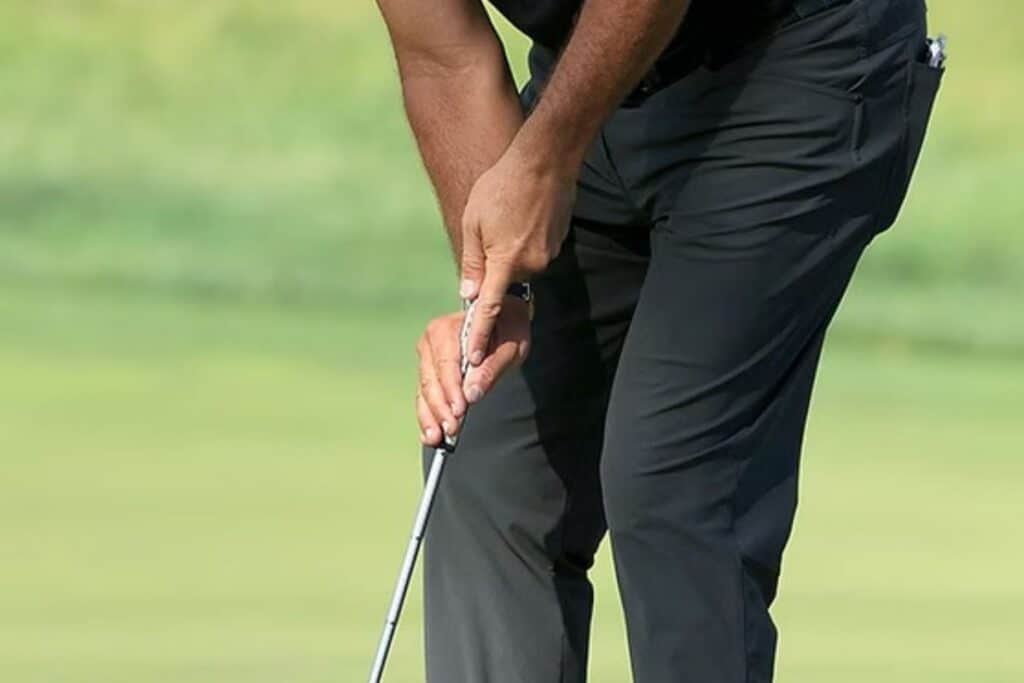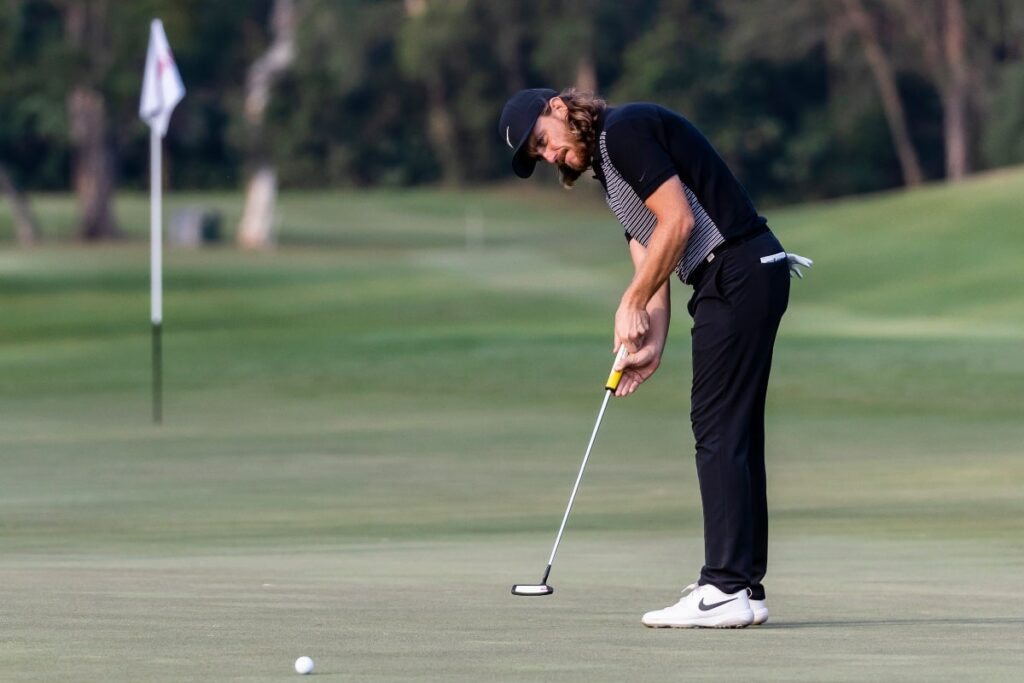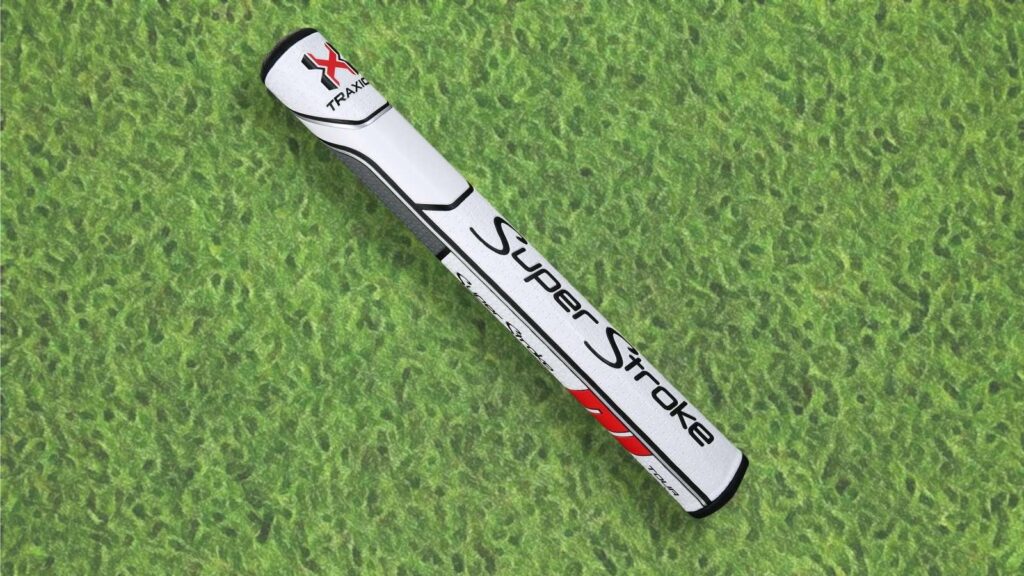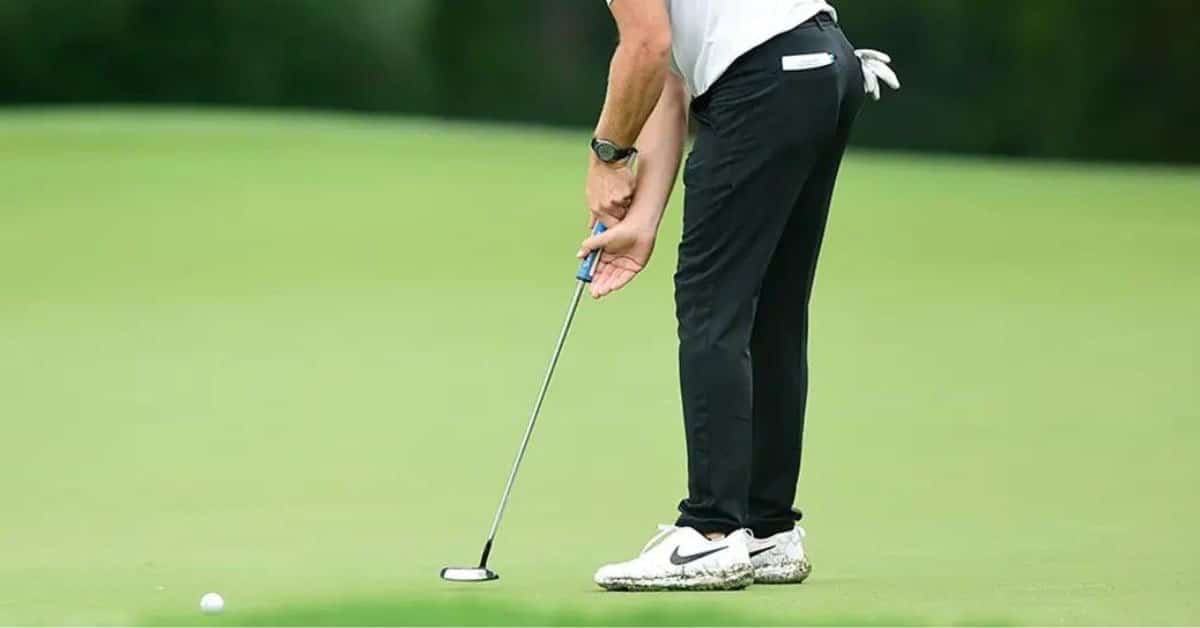Putting can be a frustrating part of golf. I know from experience that feeling of despair when seemingly nothing is working, and putts simply aren’t dropping!
If you’re stuck in a rut with your putting (or dare I say — have the yips), then it might be worth considering a new putting grip.
In this article, you’ll learn how the claw putting grip works.
The claw has helped many pros and amateurs to stabilize their putting strokes. And with enough practice, it can unlock a new level of confidence and control on the greens.
Ready to learn? Let’s go!
Claw Putting Grip
The claw putting grip is an increasingly popular technique that aims to remove the bottom hand from the stroke, for better stability and consistency. First, hold the top of the putter with your left hand. Then, place your right hand below, lightly holding the grip between your thumb and forefinger.

Benefits of the Claw Putting Grip
When using the claw, it’s almost as though you’re putting one-handed. The lower hand is simply a passenger in the process, adding a little extra stability.
Sometimes referred to as the pencil grip, the claw has three main benefits:
- Uses a swing-down-the-line motion rather than a hands-controlled one
- Puts the “power hand” (the bottom hand) into a passive position
- Provides a new look to golfers unhappy with conventional putting
According to a recent study, around 8.6 percent of players on the pro tour use the claw technique — including Tommy Fleetwood, Justin Rose, and Tony Finau.
Each of these pros has found that the claw method stabilizes their stroke, compared to the conventional reverse overlap putting grip. Subsequently, this has given them more confidence to consistently roll the ball on their target line.
But, how exactly does the technique work? Read on to find out!

How Does the Claw Putting Grip Work?
Put simply, the claw putting grip helps remove the bottom hand from the putting stroke to prevent any unwanted rotation in the clubface through impact.
Eliminating the bottom hand adds stability to the putting stroke. This makes it easier to maintain a consistent face angle, and start the ball on your line more often.
So, how does the claw grip work? Follow these three simple steps if you’re a right-handed golfer (and switch hands if you’re a lefty):
- First, hold the putter at the top of the grip with your left hand. This should be a conventional hold, with your thumb resting on the front of the grip. While this is the dominant hand in the claw putting grip, you should still keep a fairly light grip pressure — roughly 5 on a scale of 1 to 10.
- Next, place your right hand behind the lower part of the grip. Hold the grip between your thumb and index finger, with your index finger fully extended down the side of the grip. Rest your middle finger against the back of the grip.
- Finally, focus on making the stroke using the dominant left hand. This prevents the right hand from causing rotation in the face — it’s simply there for support.
There are a few variations for the lower-hand grip. For instance, Justin Rose places his index and middle fingers on top of the grip, rather than down the side.
“Keep your grip pressure very light and think of your left arm as the main driver of your stroke (I hit a lot of left-hand-only putts in practice). Your right hand is merely a stabilizer.”
Justin Rose via Golf.com
The claw method is best suited for golfers who tend to get handsy in their putting stroke — particularly those with an unstable or “wonky” backstroke.
Tommy Fleetwood is one of the most famous users of the claw putting grip. In the video below with Golfing World, he explains how the claw grip works:
Which Putter Style Does It Suit Best?
Fortunately, the claw putting grip works with any type of putter. Both blades and mallet-style putters are suited to the technique, which is highly versatile.
For instance, Tommy Fleetwood and Phil Mickelson both use traditional blade putters with the technique. Conversely, Sergio Garcia uses a mallet putter with a high MOI.
Therefore, the claw grip suits all types of golfers — those who putt with either an arc stroke or a straight-back and straight-through motion.
Which Putter Grips Work Best With the Claw?
The claw putting grip works best with thicker and slightly longer putter grips. Thicker grips allow for a more comfortable feel, while the additional length helps you maintain a counterbalance gap between the hands for improved stability.
The SuperStroke Traxion Tour Putter Grip is an oversized grip that is ideal for the claw method. Many pros — including Tommy Fleetwood — use the grip, as it allows them to have a relaxed hold on the putter, enhancing stability in the stroke.
It comes in various size and color options and features a Counter Core weight system to engage the larger muscles for a more stable and repeatable putting stroke.
So, if you’re struggling on the greens — remove your old grip and switch to the claw!

Conclusion
In summary, the claw putting grip is a highly versatile method that helps to eliminate the bottom hand from the stroke. This helps to improve stability and consistency.
To try it, follow this three-step process:
- First, hold the putter at the top of the grip with your left hand — rest your thumb on the front of the grip, and hold with 5/10 grip pressure.
- Place your right hand behind the lower part of the grip — with the grip resting lightly between your thumb and your forefinger.
- Finally, focus on making the stroke using the dominant left hand — the right hand is simply a passenger in the stroke, providing extra support.
Ultimately, the claw method can be a lifesaver for golfers who are having a torrid time on the greens. The technique feels vastly different from a conventional putting grip, which can be refreshing and add a feeling of stability to your stroke.
However, it can certainly take a few rounds of practice to master the claw. Give yourself enough time to become comfortable with the grip — but if it continues to feel unnatural, consider switching to a different technique like the interlocking putting grip.
Give the claw a try, and start sinking putts!


